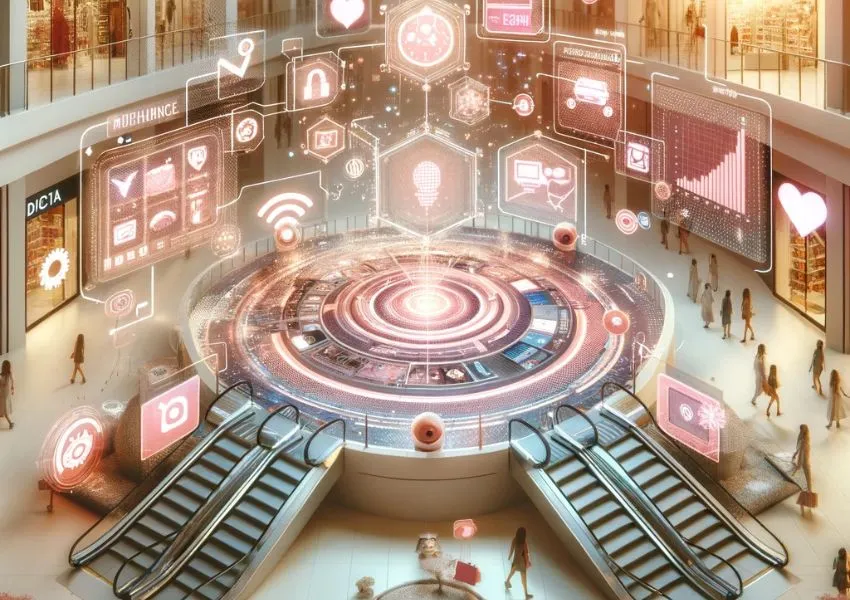Years ago, malls were the beating heart of retail and a key element of any important city’s business growth. In fact, malls have always had the ability to become a must-visit destination on the calendars and itinerary of local residents as well as tourists. From apparel to electronics, the world has come to rely on traditional brick-and-mortar stores as the primary source of consumer goods.
With the rise of ecommerce, the pandemic providing wonderful tailwinds, and the ever-rising costs of running a brick-and-mortar store, traffic situations, parking issues are all having an impact on serious shopping in malls. That does not mean the future of shopping malls is disappearing altogether. Not for a long time. But, in order to keep up with the times, malls realize that they will need to look and feel different compared to what we have known.
As consumer trends have now shifted from the traditional retail experience, malls have started to evolve, becoming much more than just a place to buy goods. Technology is significantly influencing the future of shopping malls by enhancing customer experience. Technologies have already reached a point where they are creating immersive and interactive shopping experiences. They are allowing customers to visualize how furniture might look in their homes, to try on clothes virtually, and to even explore different stores within the mall without physically being there.
Mobile apps, AI and interactive self-service kiosks are also playing a crucial role.
Since online and the ecommerce revolution is not going away easily, good and forward-thinking malls need to embrace an even deeper ecommerce integration. Malls and e-commerce are not necessarily adversaries. Successful malls are finding ways to integrate online and offline shopping experiences, benefiting both sectors.
Malls need to invest in a robust and user-friendly online platform. Right now, the majority of the malls limit themselves to a slightly upgraded version of a basic website. This would need to be changed to a good quality online “Mall-site” as opposed to a mundane website. Create an immersive and interactive virtual shopping experience which seamlessly integrates with the mall’s physical stores. Through the use of data, blend the physical and virtual worlds to create a unique shopping experience. Rentals could be a newly thought out idea of a consolidated amount including not only for physical space, but also for the same look and feel virtual store of the brand on the “mall-site”.
The first stage of technological transformation was when the world of shopping and commerce was trying to perfect the assimilation of brick-and-mortar and ecommerce and build a business around it. In my view, world is now in the second stage when the working product is evolving in unexpected directions, some directions are dramatically increasing productivity. Only those who are adapting to the evolving second stage are beginning to reap better benefits.
At some stage in the future will come the third stage of transformation, which will be more mature, it will still produce more business models, but not at the same rate as the current second stage.
In a digital age where buying products is just a few clicks away, good shopping malls are already evolving to offer more than just a retail experience. Many have become experience-driven spaces.
Newly re-designed malls will have to host classes, art exhibitions, pop-up shops, mini-fashion shows and loads of instagrammable spaces. Creating those moments that draw residents and visitors in, motivating them to capture and share their experiences on social platforms, becoming influencers for the brands and stores, and ultimately encouraging more people to visit. While earlier malls had maybe a movie theatre and a basic food court, today’s malls have to necessarily be home to gourmet restaurants, expansive multiplexes, indoor amusement parks, gymnasiums, and even skating rinks or aquariums in some cases. There are a few such extremely successful models.
With the rise of remote work and freelancing, malls could incorporate co-working spaces, allowing professionals to work, meet, and collaborate. Imagine the idea of completing a work project or a class, and then stepping out into the mall for a quick shopping spree or a meal.
Consumers have started gravitating towards unique, localized experiences, like farmers’ markets, boutique stores, department stores, or pop-up shops that offer a distinct feel and personalized service. Like me, just spend a few hours in a mall and observe the new-age millennial shoppers. Instead of buying a mass-produced shirt from a big chain store in a mall, they might prefer a handcrafted one from a local designer, which tells a story and connects with their values.
The new-age consumer would like to see more stores dedicated to sustainable, ethically produced, or upcycled products. These stores would cater to an increasingly eco-conscious consumer base.
Future malls could be designed or retrofitted with sustainability in mind, incorporating features like green roofs, rainwater harvesting systems, and natural ventilation techniques. There is a huge amount of wastage in mandating that all stores get themselves re-done and re-fitted every few years.
Real estate dynamics has and will always continue to play a very significant role in the existentiality of malls and brick-and-mortar retail. On the one hand, landlords and mall owners do not wish that one or two global ecommerce players become monopolistic across the world, yet they seem to be rather unrealistic in their rental returns and how they deal with their long-term brands and stores.
For the sake of a better level playing field, the world of business needs to ensure that we as a race continue to live in the “and” generation – where malls and ecommerce both survive and thrive. Instead of always following the philosophy of “In with the new, out with the old”, it sometimes pays to follow “In with the new, while finding ways to meaningfully stick with the old”.
